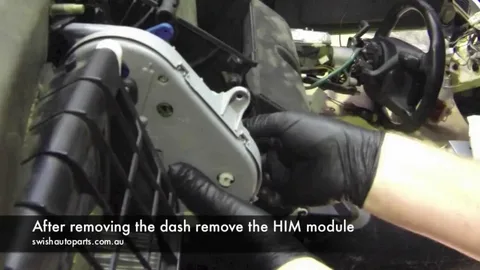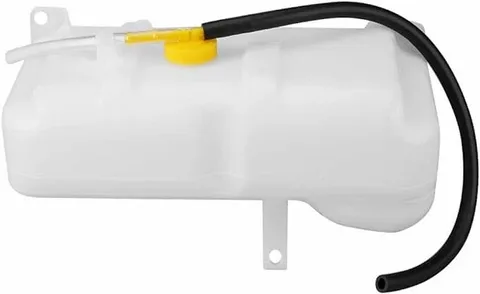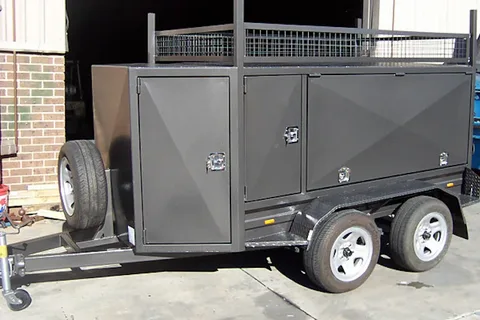is your Ford Territory not quite up to its potential regarding heating and cooling efficiency? Perhaps the answer lies in the component you may not have given much thought to: the Ford Territory Fan Blower. An essential part of your vehicle’s HVAC system, the fan blower is responsible for circulating air through the vents to maintain your car’s temperature comfortably. In this blog post, we’ll explore everything you need to know about upgrading your ride with a new Ford Fan Blower. We’ll delve into the signs that indicate your fan blower might be failing and discuss the benefits of replacing it with a new one.
What Is a Ford Territory Blower Fan?
The blower fan in a Ford Territory plays a crucial role in the vehicle’s heating, ventilation, and air conditioning (HVAC) system. It is responsible for circulating air within the cabin, ensuring passengers remain comfortable regardless of external weather conditions.
Functionality
The blower fan draws in air from outside or recirculates air from inside the vehicle, pushing it through the HVAC system. When the air passes over the heating or cooling elements, it is either warmed or cooled before being distributed throughout the cabin. This process is vital for maintaining a comfortable temperature, defogging windows, and ensuring proper air circulation.
Common Issues
The Ford Territory blower fan can encounter issues like any component over time. Common problems include a fan that does not operate, runs only at certain speeds, or unusual noises during operation. These issues can stem from electrical faults, worn bearings, or a malfunctioning blower motor resistor. If the blower fan fails, cabin comfort can significantly decrease, especially during extreme temperatures.
Maintenance Tips
Regular maintenance is key to keeping the blower fan in good working condition. This includes checking the cabin air filter, ensuring that the fan and motor are debris-free, and inspecting electrical connections for signs of wear or corrosion. If you experience any issues with the blower fan, addressing them promptly can prevent further damage and ensure a comfortable driving experience in your Ford Territory.
Importance of a Well-Functioning Fan Blower
A well-functioning fan blower is essential for maintaining comfort and safety in vehicles. It plays a crucial role in regulating the temperature and air quality inside the cabin, enhancing the overall driving experience.
Comfort and Climate Control
The primary function of a fan blower is to circulate air throughout the vehicle. Whether on a hot summer day or a chilly winter morning, an efficient fan blower helps quickly heat or cool the interior, ensuring passengers remain comfortable. This temperature control is vital for long journeys, where driver fatigue can increase if the climate is not optimal.
Safety Features
Beyond comfort, a functioning fan blower is integral to vehicle safety. It prevents fogging on windows by promoting airflow, which enhances visibility. A clear view is critical for safe driving, especially in adverse weather conditions. Additionally, a well-maintained blower helps to reduce the likelihood of unpleasant odours and harmful pollutants circulating within the vehicle, contributing to a healthier environment for occupants.
System Longevity
Regular maintenance of the fan blower system can prolong its life and efficiency. Addressing issues like worn-out motor bearings or clogged filters ensures optimal performance and reduces the risk of costly repairs down the line. In summary, a well-functioning fan blower is crucial for comfort, safety, and longevity, making it a key component of any vehicle’s HVAC system.
Signs Your Fan Blower Needs Replacement
The fan blower in your vehicle plays a crucial role in maintaining cabin comfort by circulating air through the heating and air conditioning systems. Over time, however, components can wear out, leading to reduced efficiency or complete failure. Recognising the signs that your fan blower needs replacement is essential for timely intervention and maintaining a comfortable driving experience.
1. No Airflow:
One of the most apparent signs that your fan blower is failing is the absence of airflow from the vents, regardless of whether the fan is set to high or low. If you notice that the air is weak or completely nonexistent, it could indicate a problem with the blower motor or a blockage in the air ducts.
2. Unusual Noises:
Strange sounds like grinding, squeaking or rattling when the fan runs may signal that the blower motor is malfunctioning. These noises can result from worn-out bearings, loose components, or debris obstructing the fan. Ignoring these sounds may lead to further damage and a more costly repair.
3. Overheating:
If the blower motor is working harder than normal, it can overheat. You may notice a burning smell or the motor may become too hot to touch. Overheating can damage the engine and other components, making replacement necessary.
4. Fluctuating Speeds:
If the fan speed fluctuates erratically or fails to respond to your settings, this inconsistency often points to an issue with the blower motor or the vehicle’s electrical system. In some cases, a simple fix like replacing a resistor may resolve the problem, but it can also indicate that the blower is nearing the end of its life.
How to Replace the Ford Territory Heater Fan?
Replacing the heater fan in a Ford Territory can help restore optimal cabin comfort during colder months. The process is straightforward but requires some attention to detail. Here’s a step-by-step guide to help you through the replacement.
Step 1: Disconnect the Battery:
Safety is paramount. To prevent electrical shocks while working on the vehicle’s electrical system, begin by disconnecting the negative terminal of the battery.
Step 2: Remove the Glove Box:
Open the glove box and remove any contents inside. Locate the screws or clips that secure the glove box and carefully detach it from the dashboard. This will provide you with access to the heater fan assembly.
Step 3: Locate the Heater Fan:
The heater fan is typically located behind the dashboard, near the firewall. Look for a circular plastic cover that protects the fan. You may need to remove additional components or covers to access it fully.
Step 4: Disconnect the Wiring and Remove the Fan:
Once you’ve located the Ford Territory Heater Fan, disconnect the attached wiring harness. Remove the screws or clips holding the fan in place and carefully extract it from its housing.
Step 5: Install the New Heater Fan:
Position the new heater fan into the housing, ensuring it fits snugly. Reattach the screws or clips and reconnect the wiring harness.
Step 6: Reassemble the Dashboard:
Replace the glove box and secure it with screws or clips.
Step 7: Reconnect the Battery:
Finally, reconnect the battery’s negative terminal and test the new heater fan to ensure it operates correctly.
Benefits of Upgrading Your Fan Blower
Upgrading your vehicle’s fan blower can significantly enhance your driving experience. Here are some key benefits to consider:
Improved Airflow and Comfort
One of the primary advantages of upgrading your fan blower is improved airflow. A high-performance blower can deliver a stronger and more consistent stream of air throughout the cabin, ensuring you and your passengers remain comfortable regardless of the outside temperature. This is particularly beneficial during extreme weather conditions, where efficient climate control is essential.
Enhanced Durability
Upgrading to a quality fan blower often means investing in a more durable unit. Many aftermarket blowers are designed with better materials and construction, which can lead to a longer lifespan. This durability can save you money in the long run, as you’ll be less likely to deal with frequent repairs or replacements.
Quieter Operation
Older or factory-installed blowers can be noisy and disruptive. By upgrading, you can often find models that operate more quietly, enhancing the overall driving experience. A quieter blower means less distraction from road noise and a more pleasant atmosphere within your vehicle.
Energy Efficiency
Newer fan blowers are often designed to be more energy-efficient. Upgrading can reduce the load on your vehicle’s electrical system, potentially leading to better fuel economy. This is especially important for drivers looking to maximise efficiency and minimise operating costs.
In conclusion, upgrading your fan blower can significantly improve comfort, durability, noise levels, and energy efficiency, making it a worthwhile investment for any vehicle owner.
Choosing the Right Fan Blower
Selecting the right fan blower for your vehicle is crucial for maintaining a comfortable driving environment. A functioning blower motor is responsible for circulating air through the heating and cooling systems, ensuring you remain comfortable regardless of external weather conditions. However, with various options available, understanding the key factors can simplify your decision.
Types of Fan Blowers
There are primarily two types of fan blowers: axial and centrifugal. Axial blowers are known for their efficiency in moving air in a straight line, making them ideal for applications requiring high airflow with lower resistance. They are commonly used in compact vehicles where space is limited. On the other hand, centrifugal blowers are designed to move air in a radial direction and are more effective in applications requiring higher pressure. These are typically found in larger vehicles or those with advanced climate control systems.
Motor Power and Efficiency
Another important consideration is the motor power and efficiency. Look for a blower motor with a higher wattage rating, providing stronger airflow and better performance. Additionally, energy-efficient models can help reduce strain on the vehicle’s electrical system, potentially improving fuel efficiency. It’s also worth checking for models with variable speed settings, allowing you to adjust airflow according to your comfort needs.
Noise Levels
Noise levels are often overlooked when selecting a fan blower. A quality blower should operate quietly, minimising distractions while driving. Reading customer reviews or consulting with automotive professionals can provide insights into the noise levels of different models.
Conclusion
Investing in a new Ford Territory Fan Blower can significantly impact your driving experience. A high-quality, well-functioning blower ensures consistent airflow and optimal temperature control, enhancing comfort during every ride. By upgrading to a new fan blower, you can improve the efficiency and reliability of your vehicle’s HVAC system, making it easier to manage defrosting and cooling needs. Moreover, a new fan blower reduces the strain on other HVAC components, potentially saving on future repair costs and extending the system’s overall life. When choosing a replacement, ensure compatibility and prioritise durability and performance to maximise your upgrade.
FAQS
Q: Can I replace the Ford Territory Fan Blower or hire a professional?
A: If you are comfortable with basic automotive repairs and have the necessary tools, you can replace the Ford Territory Fan Blower. Detailed guides and tutorials are available to assist you. However, if you’re unsure or lack the proper tools, hiring a professional ensures the job is done correctly.
Q: What could happen if I ignore a failing fan blower?
A: Ignoring a failing fan blower can lead to poor HVAC performance and an uncomfortable driving environment. Additionally, a malfunctioning blower can strain other HVAC components, leading to more extensive and costly repairs down the line.
Q: Does upgrading my fan blower improve my vehicle’s value?
A: Upgrading your fan blower might not significantly increase the resale value of your vehicle. However, a well-functioning HVAC system can make your car more appealing to potential buyers. It gives them confidence in the vehicle’s condition and ensures a more comfortable driving experience.
Q: What are some signs that my fan blower needs replacement?
A: Common signs include strange noises, weak airflow, no air from the vents, a burning smell, or the blower only working at certain speeds. If you notice any of these symptoms, it’s advisable to consider replacing your fan blower.
| Related Business Listings |
| Contact Directory |
| Local Business Profiles |




